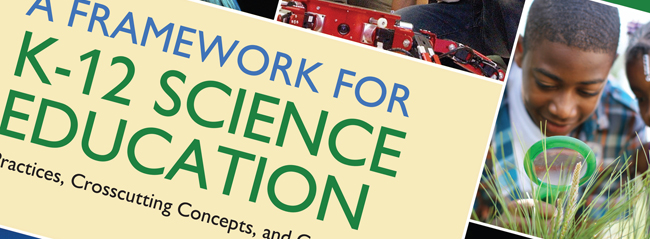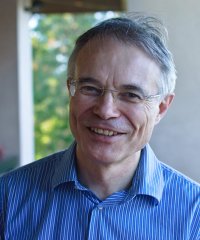
Episode 65 – Framing a New Vision for Science Education

Dr. Jonathan Osborne
Join us to kick off our 2011-2012 season by talking science standards with Jonathan Osborne from Stanford University. As a committee member who helped draft the Conceptual Framework for New Science Education Standards released this summer, Osborne talks to us about science practices, crosscutting concepts and core ideas found within the framework.
Preview from the Show:
The intention of this document was that it would spell out the kind of broad framework of what it was that a science education K-12 should attempt to achieve. And the framework… basically has conceptualized this really in terms of it being a framework for the practices, which are: what kinds of things do scientists do, what are the cross-cutting concepts that appear in all of the sciences, and then what are the core ideas? And the core ideas are conceptualized in terms of life science, physical sciences, earth sciences, and what we may call ideas that are central to engineering. …This document will be used to write a set of standards, which will be the set of common core standards in science.
…there are these practices that scientists engage in: asking questions, analyzing and interpreting data, constructing explanations using modeling. And therefore, you can’t really say that you’ve got a rounded science education or complete science education if you don’t spell out to students that this process of analyzing and interpreting data is something that is fundamental and key to science.
Education is about making people think. It’s about interesting people in a topic. It’s about engaging them so that they will pursue it for the rest of their lives. Now I’m speaking to this kind of mythical parent here, but if you just want them to know the stuff – yeah, sure, they’ll know it for the test tomorrow. But you’ll not be leaving them with the legacy, or enduring interest and love of a subject. And do you want your kid to be someone who’s stimulated, engaged and interested in school? Or do you want them to be someone who regards [school] as a boring place where all they have to do is get a lot of information shoved down their throat, regurgitate and forget it the next day? At the moment, we do too much of the latter in science education. And I don’t blame the teachers for that; a lot of it’s about the assessment and the ways in which that assessment has become high-stakes. And there’s not enough space for making things and exploring ideas. That’s what education should really be about – exploring ideas.
Links:
- Jonathan Osborne, Stanford
- Conceptual Framework for New Science Education Standards The book can be read or downloaded at no charge from the National Academies Press.
- Committee on Conceptual Framework for New Science Education Standards
- Next Generation Science Standards
- Happy 5th Anniversary
Featured Image used with Permission from the National Academy of Sciences
To listen to this episode, download the mp3 directly, find us on iTunes, or use the player below.
I enjoyed listening to your discussion. There is such a wide variety of voices telling teachers how to teach. What i gathered fromt this article is do what gets the students interested and motivated to do science. Not every student needs to know the same things. I do agree there is a core knowledge, but can we get students to learn it via an engaging activity. That is the type of class i wish i belong.
Rock on Bros!
Very timely and informative podcast, thanks! I am a teacher in Washington State, and our department is starting to think about the future curriculum purchases/delivery. I have been wondering about how the upcoming framework may change expectations of our students, and this podcast gave me some good background. Again, thanks!
Although, the framework sounds even LESS specific in its guidelines for teachers than the current framework! I love the emphasis on modeling and wrestling with scientific thinking. However, I am always skeptical about how the powers to be take such ideas and put them into practice (i.e. assessments and textbooks). We’ll see.
I enjoyed Jonathan Osborne’s comments. He spoke about each of the eight scientific and engineering practices:
1. Asking questions (for science) and defining problems (for engineering)
2. Developing and using models
3. Planning and carrying out investigations
4. Analyzing and interpreting data
5. Using mathematics and computational thinking
6. Constructing explanations (for science) and designing
solutions (for engineering)
7. Engaging in argument from evidence
8. Obtaining, evaluating, and communicating information
He said that these eight practices specify what inquiry is; they bring inquiry into focus. They also enable practitioners to identify what is bad science.
Details are in the Conceptual Framework book (see “links” above).
Modeling Instruction uses all eight of these practices. To see this, look at the description of a modeling cycle, at http://modeling.asu.edu/modeling-HS.html
For more detail, read the 1995 article by Malcolm Wells, David Hestenes, and Gregg Swackhamer, at that webpage. It’s a good read!
Pingback: Episode 89 – NGSS Second Draft: What to Know